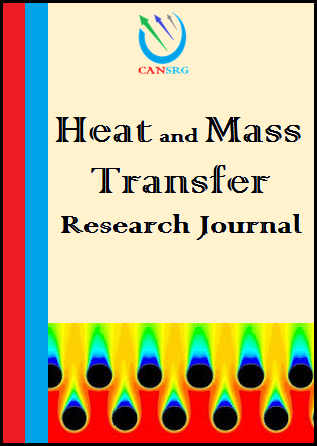
CanSRG

Heat and Mass Transfer Research Journal (HMTRJ)
Research Article
Computational Fluid Dynamics Simulation of a Nanofluid-Based Annular Solar Collector with Different Metallic Nano-Particles
Aeronautical & Mechanical Engineering Department, School of Computing, Science and Engineering, Newton Building, University of Salford, Manchester, M54WT, UK.
Submitted: August 2, 2018; Accepted: June 22, 2019
Abstract
A numerical study of convective heat transfer in an annular pipe solar collector system is conducted. The inner tube contains pure water and the annular region contains nanofluid. Three-dimensional steady-state incompressible laminar flow comprising water-based nanofluid containing a variety of metallic nano-particles (copper oxide, aluminium oxide and titanium oxide nano-particles) is examined. The Tiwari-Das model is deployed for which thermal conductivity, specific heat capacity and viscosity of the nanofluid suspensions is evaluated as a function of solid nano-particle volume fraction. Radiative heat transfer is also incorporated using the ANSYS solar flux and Rosseland radiative models. The ANSYS FLUENT finite volume code (version 18.1) is employed to simulate the thermo-fluid characteristics. Mesh-independence tests are conducted. The influence of volume fraction on temperature, velocity, pressure contours is computed and visualized. Copper oxide nanofluid is observed to achieve the best temperature enhancement. Temperature contours at cross-sections of the annulus are also computed.
Keywords
Thermal convection; Nanofluid; Annulus; ANSYS FLUENT; Finite Volume; Metallic Nano-Particles; Temperature Contours; Velocity; Pressure; Solar Collector.
Downlaod Full Text >>
This work is licensed under a Creative Commons Attribution 4.0 International License.